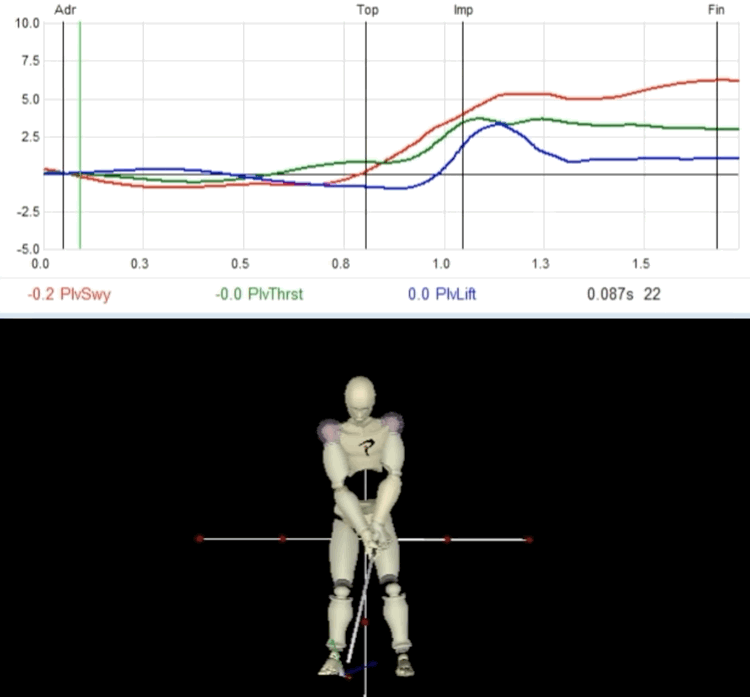IMPROVE MY GAME
Articles
What You Can Learn From No Laying Up's Visit to TPI
We recently had the opportunity to evaluate DJ, Cody and Casey from No Laying Up and wanted to highlight a few insights from their assessment that might be instructive to you or your golfers.
While DJ, Casey and Cody's work with one of the most popular media organizations in golf might afford them a few more opportunities to get on the course than most amateurs, their 9-to-5 probably looks a lot more similar to the golfers in your gym or on your lesson tee than it does to a touring pro.
As with every golfer we evaluate, our goal is to help them determine WHAT they’re doing (through video and 3D), HOW they’re doing it (through force plates) and offer some suggestions as to WHY they might do it that way (physical screen, swing concept).
With this information, we’re able to help build a more precise program designed to meet their specific needs. It’s like making a cut with a scalpel vs a chainsaw.
After all, if three different golfers have different swings, different movement capabilities and different bandwidth to train, wouldn't it make sense that we'd offer different solutions?
Cody said it as well as we could have:
“What does getting better look like? What does the roadmap look like? It’s going to look different for everybody.”
DJ
DJ is NLU's executive producer of video content and a contributor to their podcasts and website. He has a common swing characteristic known as early extension, which is defined by excessive forward movement of the lower body during the swing.
Below is a capture of his 3D data. Watch the green line (pelvis thrust) move up (indicating movement towards the target line). By impact, DJ's pelvis has "thrusted" forward over 3 inches.

We didn’t need to use 3D motion capture to identify DJ's early extension. DJ knows he early extends, but we hoped to offer some insight into why he might do it.
In our experience, early extension can be the product of our physical capabilities and of our concept of what to do in the swing. For DJ, it was a bit of both.
In his physical screen, DJ had difficulty rotating. If rotation is limited, it would make sense that the pelvis might move towards the target line instead. Thrusting was easier for the body than turning.
Furthermore, DJ has an upper-body dominated swing. In the intro of the video, he refers to only thinking of using his arms and wrists. His legs are passive.
This is important insight into why he might allow his lower body to move forward in the swing. In a golf swing, the centrifugal force created by the momentum of the club actually pulls a golfer towards the target line. To counteract, a golfer must pull against the handle and push against the ground. DJ struggled with the latter.
By working to develop lower body power in the swing, DJ can hopefully learn to push against the ground to prevent loss of space. It's not only a more mechanically sound swing, it's a more athletic swing.
Medicine balls are one of our favorite tools for helping to develop this:
Casey
Casey is the merch manager for NLU and has one of the most common Body-Swing Connections we see, specifically the relationship between limited rotation on the trail side and Reverse Spine Angle.
If a golfer doesn’t like to load into their trail side, they tend to arch their lower back to get the club to the top.
The relationship between limited mobility and reverse spine angle is one of the strongest Body-Swing Connections we see.
— TPI (@MyTPI) February 24, 2024
If a golfer can’t rotate through their thoracic spine, hips or shoulders, they’re often more likely to compensate with excessive extension or side bend.… pic.twitter.com/hZgfDys7X7
This was likely the case with Casey. She doesn't turn well through her trail hip or thoracic spine, so she developed another strategy to get the club to the top which resulted in Reverse Spine Angle.
Cody
Cody’s assessment was an excellent example of how an injury can affect our swing mechanics. Pain is a powerful motivator of movement. And even though pain may have subsided, the influence of injury trauma often persists (we recently wrote about this concept called "guarding").
Cody sustained a serious back injury while serving as a Special Operations Officer in the U.S. Army. Numerous surgeries and countless treatments later, the acute injury had "healed," but the trauma had a lasting effect on the function of his hip, especially the glute.
This showed up in our Bridge with Leg Extension Test. Golfers who struggle with this test will often feel cramping in their hamstring because it's trying to compensate for lack of contribution of the glute. This was the case for Cody.
When someone says their "glutes aren't activated," this is what they can be referring to.
To help address - and further assess - this, Dr. Rose suggested Deer in the Headlights.
If you are a coach, fitness or medical professional interested in learning more about how to help golfers determine if their body is affecting their swing, check out our newly updated Level 1 online course.
View TPI Level 1 Online Course
If you're a golfer interested in a physical assessment, you can connect with a TPI Certified expert via our Find an Expert page.